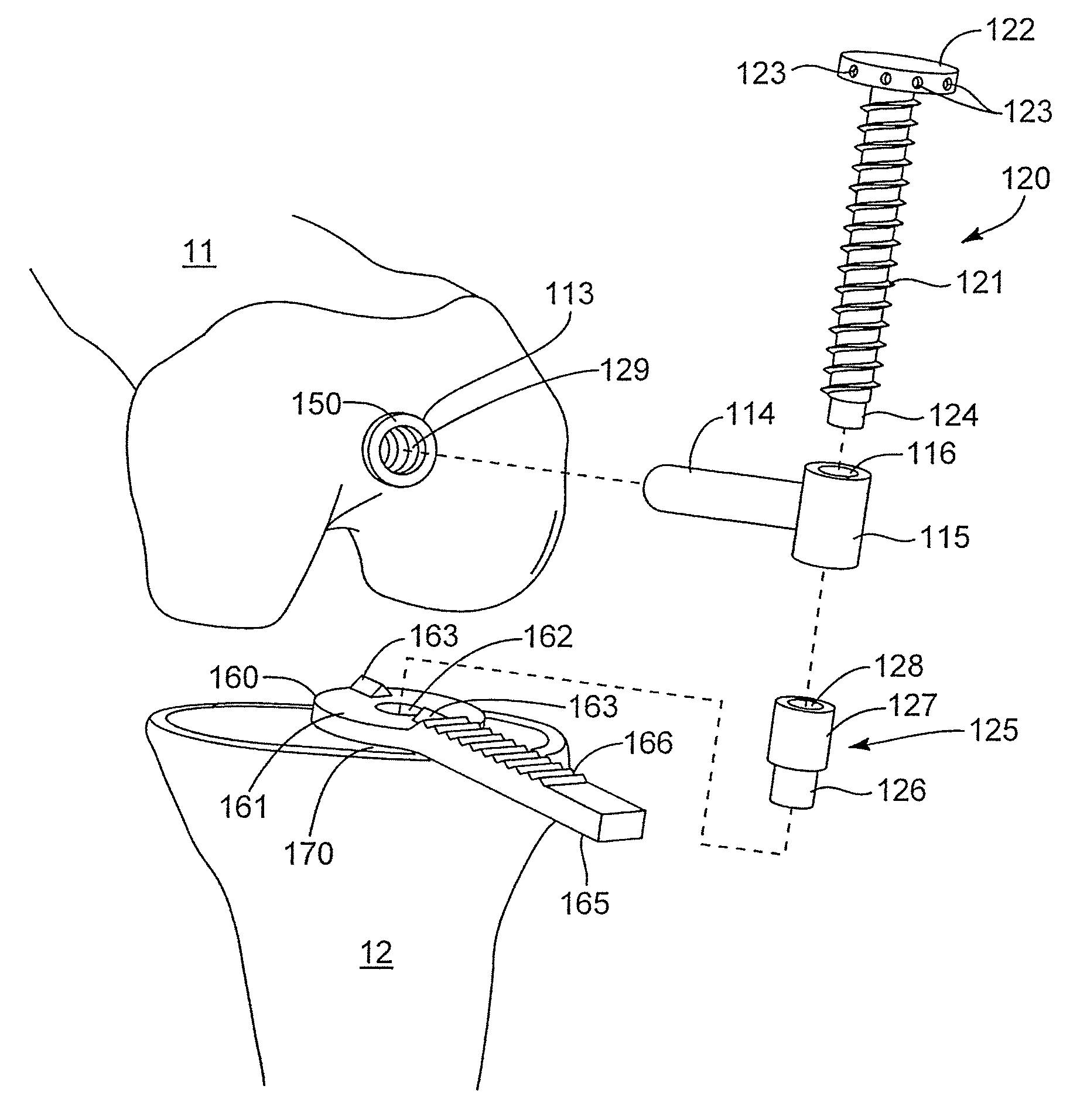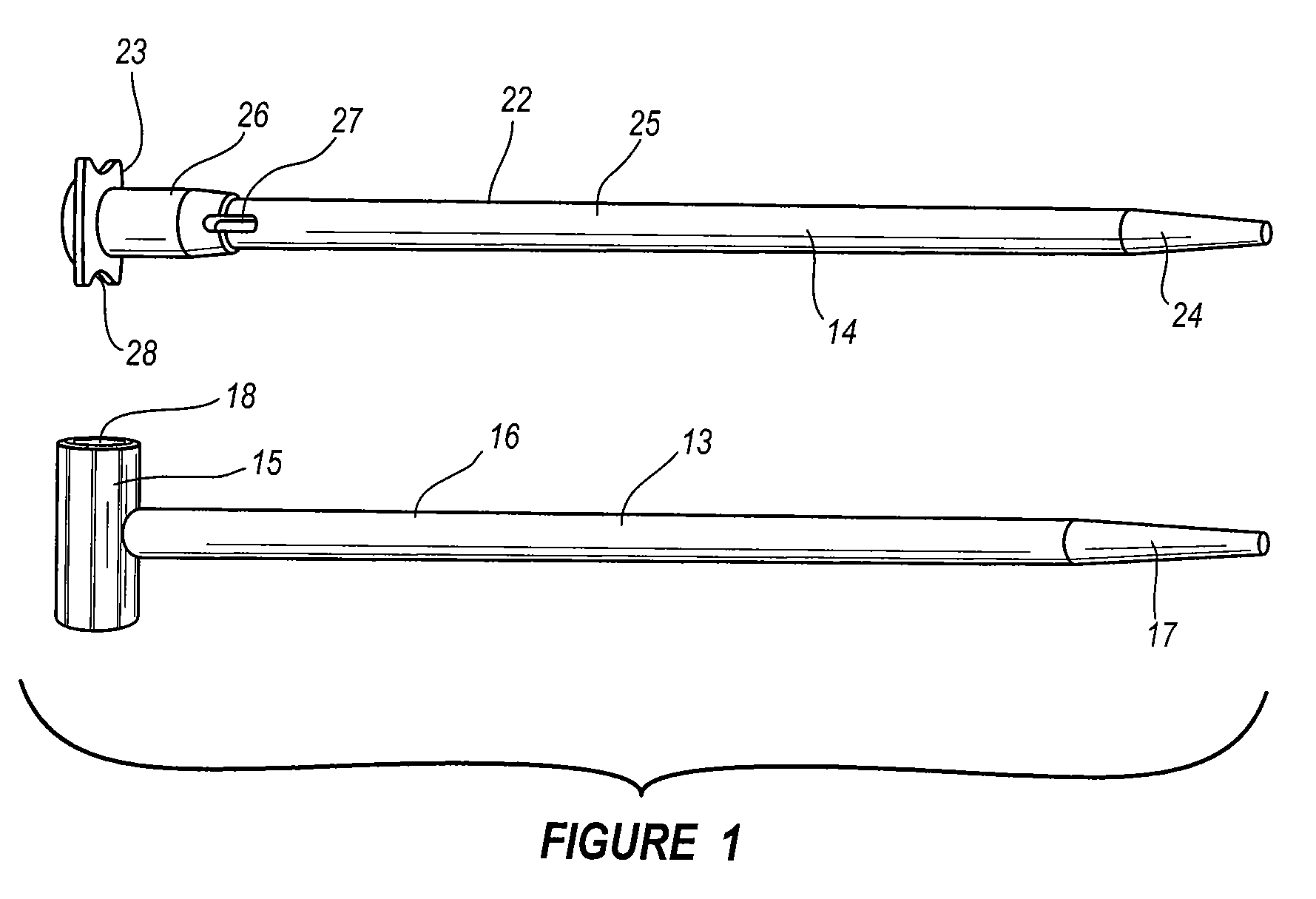Systems and methods for guiding cuts to a femur and tibia during a knee arthroplasty
a technology of knee arthroplasty and guiding methods, which is applied in the field of knee arthroplasty systems and methods, can solve the problems of difficult preservation of soft tissues surrounding the knee, and achieve the effects of fast assembly and disassembly, small, non-invasive approaches to the knee joint, and improved patient outcomes
- Summary
- Abstract
- Description
- Claims
- Application Information
AI Technical Summary
Benefits of technology
Problems solved by technology
Method used
Image
Examples
Embodiment Construction
[0060]The present invention now will be described more fully hereinafter with reference to the accompanying drawings, in which some, but not all embodiments of the invention are shown. Indeed, this invention may be embodied in many different forms and should not be construed as limited to the embodiments set forth herein; rather, these embodiments are provided so that this disclosure will satisfy applicable legal requirements. Like numbers refer to like elements throughout.
[0061]An assembly 10 of the present invention for facilitating preparation of a knee joint, including guiding positioning of cuts to a femur 11 and tibia 12 of the knee joint, for later mating with femoral and tibial knee replacement components, is shown in the accompanying figures. Generally, the assembly 10 includes various components selected and arranged to attach to a reference point inside the knee joint compartment (such as one or more intramedullary (IM) rods), extend through a relatively narrow, small or ...
PUM
 Login to View More
Login to View More Abstract
Description
Claims
Application Information
 Login to View More
Login to View More - R&D
- Intellectual Property
- Life Sciences
- Materials
- Tech Scout
- Unparalleled Data Quality
- Higher Quality Content
- 60% Fewer Hallucinations
Browse by: Latest US Patents, China's latest patents, Technical Efficacy Thesaurus, Application Domain, Technology Topic, Popular Technical Reports.
© 2025 PatSnap. All rights reserved.Legal|Privacy policy|Modern Slavery Act Transparency Statement|Sitemap|About US| Contact US: help@patsnap.com



